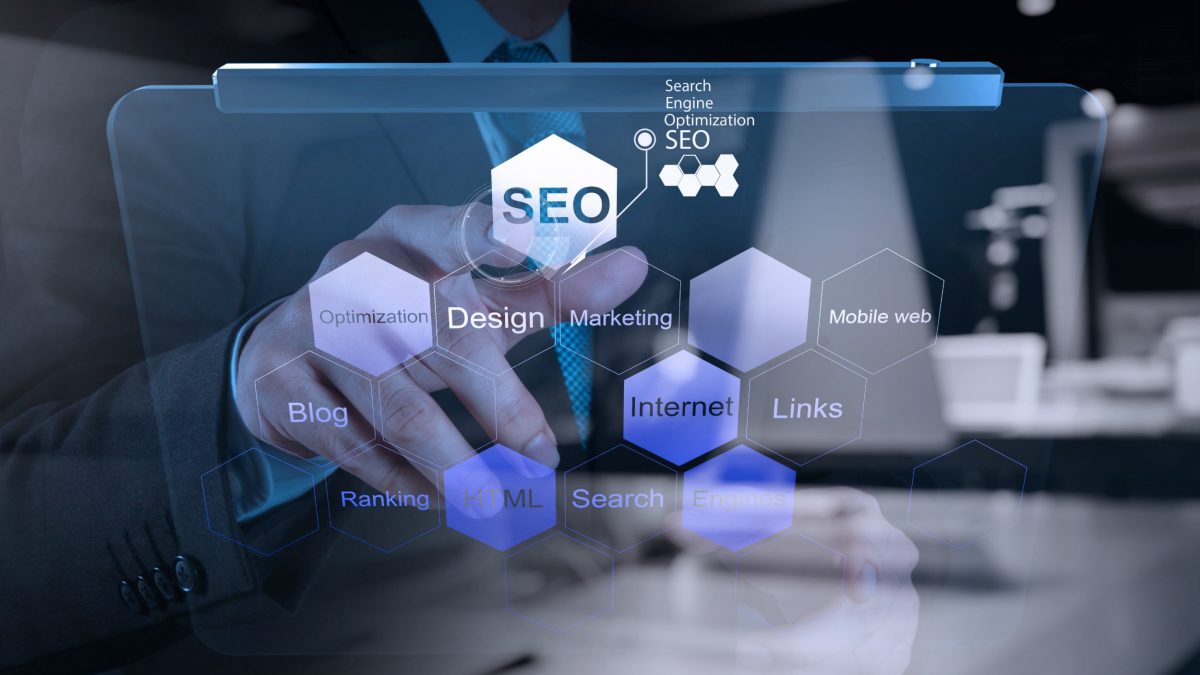SEM vs SEO: Which Strategy is the Best for Your Business
Welcome to the world of digital marketing, where acronyms like SEM and SEO are thrown around like confetti at a celebration. If you’re new to this realm or looking to improve your game, What’s the difference between SEM and SEO? And, more importantly, which strategy is best for your business?
Well, fear not! In this blog post, we’ll dive deep into the exciting world of Search Engine Marketing (SEM) and optimization (SEO). We’ll explore their similarities and differences, discuss their business benefits, and provide useful tips for choosing between these powerful strategies.
So please grab a cup of coffee or your favorite energy drink because we’re about to embark on an exhilarating journey through the realms of SEM and SEO. Trust us; by the end of this article, you’ll have all the knowledge you need to make an informed decision that will propel your business toward success in the online arena. Let’s get started!
Understanding SEM and SEO
Understanding SEM and SEO is essential for any business to establish a strong online presence. These two strategies may seem similar, but they have distinct differences that require individual attention.
SEM, or Search Engine Marketing, involves paid advertising on search engines like Google or Bing. It allows businesses to display their ads prominently on search engine results pages (SERPs) when users enter relevant keywords. With SEM, you bid on keywords and pay each time someone clicks on your ad, hence the term “pay-per-click” (PPC) advertising.
On the other hand, SEO, or Search Engine Optimization, focuses on improving organic visibility in search engine results through non-paid means. This strategy involves optimizing your website’s content and structure to rank higher in SERPs naturally. By aligning with search engine algorithms and providing valuable content to users, you can increase your chances of appearing at the top of organic listings.
While SEM offers immediate visibility through paid advertisements, it requires ongoing investment as long as you want your ads to be displayed. On the contrary, SEO takes time and effort upfront but can result in sustained organic traffic without continuous financial investment.
So why choose one over the other? Well… that depends on factors such as budget constraints, marketing goals, target audience behavior analysis, etc., which we’ll delve into later in this article.
Similarities and Differences between SEM and SEO
Regarding digital marketing strategies, SEM (Search Engine Marketing) and SEO (Search Engine Optimization) are often used. While both aim to improve a website’s visibility on search engine results pages, there are some key differences between them.
SEM involves paid advertising campaigns on search engines like Google or Bing. It allows businesses to bid for ad placement in the sponsored section of search engine results. On the other hand, SEO is focused on optimizing a website organically so that it appears higher in organic search results.
One similarity between SEM and SEO is their goal of increasing website traffic. Both strategies aim to attract more visitors by improving visibility on search engines. Another similarity is their reliance on keyword research. Identifying relevant keywords helps businesses target their audience effectively.
However, one major difference lies in cost-effectiveness. With SEM, you pay for each click your ad receives, which can quickly add up if you have a limited budget. In contrast, SEO may require upfront investment in content creation or technical optimization, but it can generate long-term organic traffic without ongoing costs per click once implemented correctly.
Another distinction is the time frame and immediacy of results. With SEM campaigns running instantly after setup, businesses can see immediate increases in visibility and clicks. Conversely, implementing effective SEO tactics takes time as it relies heavily on content quality, backlink generation, or site architecture adjustments.
In summary,
while both SEM and SEO share similarities, such as increasing website traffic through optimized keyword targeting,
they differ significantly in terms of cost-effectiveness,
with SEM requiring ongoing payment per click while properly implemented SEO generates long-term organic traffic.
Additionally,
SEM provides instant visibility, while effective implementation of SEO tactics requires patience due to its gradual nature.
Understanding these similarities and differences can help businesses choose the right strategy based on their needs.
The Benefits of Using SEM for Your Business
Regarding online marketing strategies, Search Engine Marketing (SEM) offers several benefits that can greatly impact your business. One of the key advantages of using SEM is that it allows you to reach a highly targeted audience. With SEM, you can choose specific keywords and demographics to ensure your ads are shown to the right people at the right time.
Another benefit of SEM is its ability to provide immediate results. Unlike other marketing methods, which may take time to generate traffic and leads, SEM campaigns can start driving traffic to your website almost instantly. This makes it an ideal strategy for businesses looking for quick visibility and conversions.
SEM provides valuable data and insights about your target audience’s behavior. Through analytics tools, you can track click-through rates, conversion rates, and other key metrics that help refine your campaign further. This data-driven approach allows you to make informed decisions about optimizing your ads and maximizing return on investment.
Moreover, you can control budget allocation with paid search advertising through platforms like Google Ads or Bing Ads. You can set daily limits on spending so that you only pay when someone clicks on your ad or takes a desired action on your website. This flexibility ensures better financial management while still reaching potential customers effectively.
Furthermore, another advantage of using SEM lies in its ability to complement other marketing efforts, such as SEO (Search Engine Optimization). By harmonizing both strategies, businesses can dominate search engine results pages by appearing in organic listings (through SEO) and paid advertisements (through SEM), increasing overall visibility and credibility.
In conclusion,
SEM offers numerous benefits for businesses aiming to enhance their online presence quickly while targeting specific audiences effectively. Its ability to deliver immediate results and valuable insights makes it a powerful tool in any digital marketing arsenal.
The Benefits of Using SEO for Your Business
When it comes to optimizing your website for search engines, SEO is the way to go. Search Engine Optimization (SEO) has become an essential strategy for businesses looking to improve their online visibility and attract more organic traffic.
One major benefit of using SEO is that it helps you rank higher in search engine results pages (SERPs). By implementing effective on-page and off-page optimization techniques, you can increase your chances of appearing on the first page of Google or other search engines. This increased visibility can lead to more clicks, visits, and conversions for your business.
Another advantage of SEO is its cost-effectiveness compared to other digital marketing strategies like paid advertising. While some initial investment may be required to hire an experienced SEO professional or agency, the long-term benefits outweigh the costs. Once your website ranks higher organically, you won’t have to pay per click or impression like with SEM campaigns.
Furthermore, by focusing on targeted keywords and optimizing your website’s content accordingly, you can attract highly relevant traffic that is more likely to convert into customers. Unlike traditional forms of advertising, where you reach a broad audience without knowing their specific interests or needs, SEO allows you to target users actively searching for products or services similar to what your business offers.
Moreover, investing in SEO also helps build credibility and trust with potential customers. When people see your website consistently ranking high in search results over time, they perceive it as a reliable source of information or provider of quality products/services. This trust factor can significantly impact consumers’ purchasing decisions and give you a competitive edge over competitors who neglect this aspect.
Lastly, one notable benefit of utilizing SEO is its long-lasting effects. While it may take some time initially before seeing significant improvements in rankings and traffic due to algorithm updates and competition factors, once achieved through proper optimization practices like keyword research, content creation, and link building, these gains tend to be more sustainable in the long run compared to other marketing strategies that require ongoing.
Factors to Consider When Choosing Between SEM and SEO
When it comes to choosing between SEM and SEO for your business, there are several factors that you need to consider. Think about the goals and objectives of your marketing campaign. If you’re looking for immediate results and want to drive targeted traffic to your website quickly, then SEM might be your best option. On the other hand, if you have a long-term strategy in mind and are willing to invest time and effort into optimizing your website organically, then SEO could be more suitable.
Another factor to consider is your budget. SEM typically requires an advertising budget, as you’ll pay for each click or impression. This can add up quickly depending on the competitiveness of your industry. On the other hand, SEO is more cost-effective in the long run as it doesn’t require ongoing payments for ads.
Additionally, think about how much control you want over your marketing efforts. With SEM, you have full control over which keywords to target, how much money to spend on ads, and where those ads will appear. SEO takes longer but offers more organic visibility without having direct control over search engine rankings.
Furthermore, consider the level of competition in your industry. If stiff competition with well-established brands dominates search results through paid advertisements (SEM), it might be challenging for a small business just starting out. Building a strong SEO presence could be beneficial.
Lastly, evaluate the timeframe within which you want results.
Want quick results? Go with SEM! Want sustainable growth? Choose SEO!
Ultimately, the decision should be based on careful consideration of these factors aligned with the specific needs of Your Business!
Combining SEM and SEO for Maximum Impact
Regarding digital marketing strategies, search engine marketing (SEM) and search engine optimization (SEO) have their strengths. But what if I told you that combining these two powerful techniques could lead to even greater results for your business? By leveraging the benefits of both SEM and SEO, you can maximize your online visibility, drive more targeted traffic to your website, and ultimately increase conversions.
One of the key advantages of using SEM is the ability to reach a wider audience quickly through paid advertising. With platforms like Google Ads, you can bid on relevant keywords related to your business and appear at the top of search engine results pages (SERPs). This immediate exposure can generate instant visibility for your brand and attract potential customers actively searching for products or services like yours.
On the other hand, SEO focuses on optimizing your website’s content and structure to improve organic rankings in search engines. You can gradually climb up the SERPs over time by targeting specific keywords, creating high-quality content, and building authoritative backlinks. The long-term benefits of SEO include sustained organic traffic growth and increased credibility as users perceive organic listings as more trustworthy than paid ads.
By combining SEM with SEO strategies, you can cover all bases regarding online visibility. While PPC campaigns give you an immediate boost by placing you at the top of SERPs for relevant searches, ongoing SEO efforts ensure a steady flow of organic traffic from improved rankings. This dual approach allows you to capture different segments of potential customers – those who prefer clicking on ads versus those who trust organic search results more.
Moreover, integrating SEM with SEO provides valuable insights into user behavior through data analysis tools such as Google Analytics. You can uncover which keywords are driving higher conversion rates through paid ads or identify opportunities where ranking improvements would result in significant increases in organic traffic.
It’s important to note that while combining SEM and SEO offers numerous benefits, it requires careful planning and execution. Your SEM and SEO strategies should align.
Conclusion
After exploring the similarities, differences, and benefits of both SEM and SEO strategies for your business, it’s clear that there is no one-size-fits-all answer. The decision between SEM and SEO ultimately depends on your specific goals, budget, timeline, and target audience.
If you’re looking for immediate results and are willing to allocate a budget towards advertising, SEM may be your best option. It instantly lets you appear at the top of search engine results pages. However, keep in mind that your visibility will decrease once you stop investing in paid ads.
On the other hand, if you have a long-term perspective and want to build organic traffic over time without relying heavily on paid advertising budgets, SEO is worth considering. While it takes longer to see results with SEO efforts due to its reliance on optimizing content and organizing backlinks, it provides sustainable growth in targeted organic traffic.
When making this decision, it’s important to consider factors such as competition level within your industry, niche, target market, and available resources.
Considering adding both strategies into your marketing mix can also be beneficial.
SEM can generate quick leads while complementing it with long-term investment in SEO, which can help establish an enduring online presence.
In conclusion, the best strategy for your business lies in understanding each approach’s unique advantages.
Combining SEM and SEO techniques based on careful analysis of these factors will ensure optimal online visibility, maximum reach, and increased conversion rates.
Choose wisely based on what aligns with your goals, budget constraints, and overall vision.
Remember, this is not just about choosing between SEM or SEO- it’s about finding the right balance that works best for your business success!





